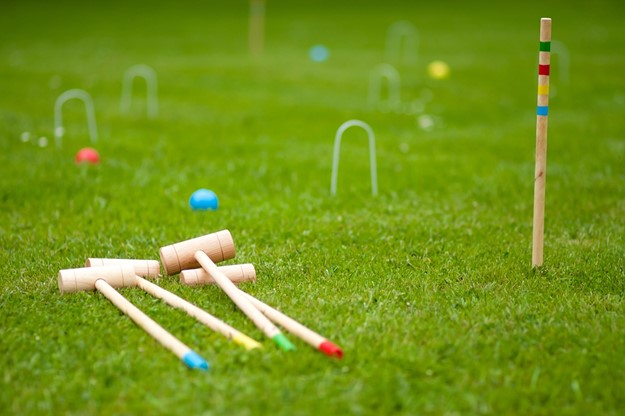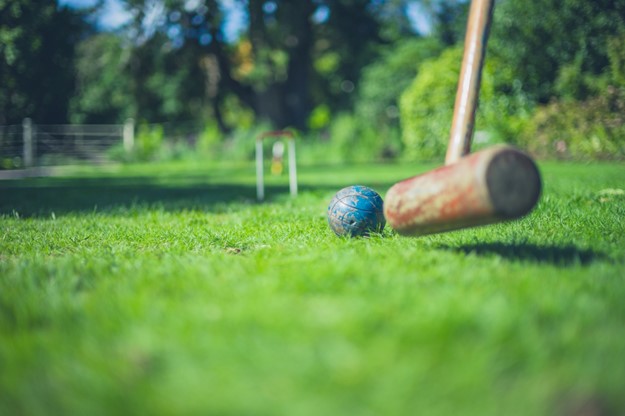A Journey Through Time: The Rich History of Croquet
The game of croquet, with its genteel reputation and leisurely pace, is a staple of sunny afternoons on well-manicured lawns across the world. Yet, this seemingly tranquil pastime carries a storied history that spans centuries and continents. Matthew Minarik delves into the origins of croquet, tracing its roots back to France in the 13th century, its evolution over time, and its ascent to popularity in England and beyond.
The Medieval Beginnings
The genesis of croquet can be traced back to France in the 13th century with a game known as “paille-maille” or “pall-mall,” from the Latin words ‘palla’ (ball) and ‘malleus’ (mallet). This early ancestor of croquet was played on a long, rectangular grass court. The objective was to hit a wooden ball through a high arch using a mallet, with the least number of strokes possible. This game became highly fashionable among the French nobility and would lay the foundational rules and gameplay mechanics that croquet would later adopt.
The Evolution of Croquet
As the game of pall-mall spread across Europe, it evolved in response to the varied cultures and landscapes of the continent. By the 17th century, the game had taken root in England, becoming a popular pastime among the aristocracy. The English version of the game saw the introduction of hoops, a series of arches through which the ball had to be driven, a key feature that would be retained in croquet.
However, it wasn’t until the 19th century that croquet as we know it today began to take shape. In the 1850s, a set of standardized rules for croquet was published in Ireland. This version of the game, which incorporated elements from both pall-mall and the English hoop games, quickly spread to England, where it became a societal craze among the upper classes. Croquet parties became a common sight on the lawns of Victorian England, celebrated for their social nature and the opportunity they provided for mingling between the sexes, a rarity in the era’s rigid societal structure.
The Golden Age of Croquet
The latter half of the 19th century is often referred to as the “Golden Age” of croquet. The game’s popularity peaked in England, with clubs and societies forming across the country. Croquet became synonymous with English summers, a leisure activity enjoyed by both men and women. It was during this time that the All England Croquet Club was established in Wimbledon, London, in 1868. This club would later become the All England Lawn Tennis and Croquet Club, the venue for the Wimbledon Championships.
The rules of the game were further refined during this period, with the introduction of the “roquet” shot, where a player hits another player’s ball to gain an extra shot. This added a strategic layer to the game, making it not just a test of skill but also of tactics.
Croquet Around the World
As the British Empire expanded, so did croquet, finding its way to the far reaches of the Commonwealth. The game was introduced to North America, Australia, New Zealand, and South Africa, where it was quickly adopted and adapted to local conditions. In the United States, croquet experienced a surge in popularity in the late 19th and early 20th centuries, with American versions of the game emerging, including “nine-wicket croquet” and “backyard croquet.”
The Modern Game
In the 20th century, croquet faced competition from other lawn sports, notably tennis, which eclipsed croquet in popularity. However, the game has enjoyed a resurgence in recent years, celebrated for its accessibility, social nature, and the strategic depth it offers. Modern croquet is played at a competitive level, with national and international championships, including the World Croquet Federation’s World Championships.
Croquet has also retained its appeal as a leisurely pastime, a game that can be enjoyed by people of all ages and skill levels. The game’s simplicity, requiring only a set of mallets, balls, and hoops, combined with its rich history, makes it a timeless activity that continues to charm players worldwide.
The history of croquet is a testament to the game’s enduring appeal. From its medieval French origins to its status as a quintessential English summer pastime, croquet has evolved while maintaining the core elements that have made it beloved for centuries. As we stroll through the manicured lawns and hear the gentle knock of mallet on ball, we partake in a tradition that bridges past and present, a game that has woven its way through the tapestry of history to remain a cherished pastime.


